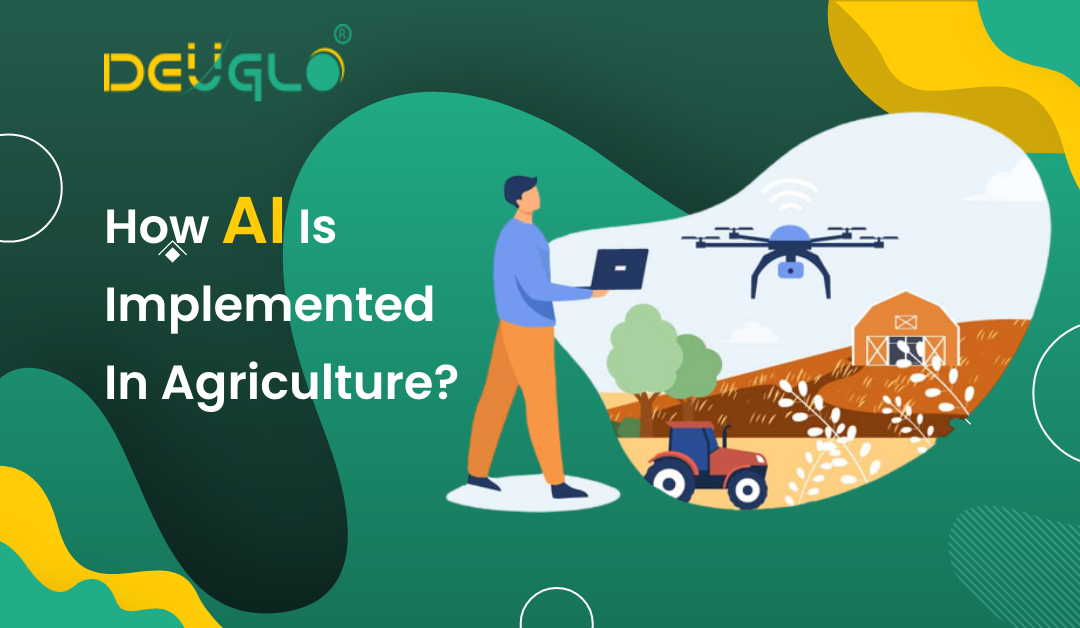How AI is implemented in Agriculture?
Artificial Intelligence (AI) has made tremendous strides in recent years and has the potential to revolutionize various industries, including agriculture. By integrating AI into the agriculture sector, farmers can significantly improve their productivity and profitability. In this article, we will discuss How AI is being Implemented in Agriculture, the Benefits it provides, and the Challenges that come with it.
Crop Management and Monitoring
One of the primary ways that AI is being implemented in agriculture is through crop management and monitoring. By using sensors, drones, and other tools, farmers can collect vast amounts of data about their crops and the environment in which they are grown. This data can then be analyzed using AI algorithms to provide real-time insights into crop health, soil moisture levels, and weather patterns, among other things.
For example, farmers can use drones equipped with cameras and other sensors to scan their fields and collect data on crop health. This data can then be analyzed to identify areas of the field that may be suffering from disease or pests, allowing the farmer to take action quickly to protect the crop. Additionally, AI algorithms can be used to predict crop yields, helping farmers make more informed decisions about planting and harvesting.
Livestock Monitoring
AI is also being used to monitor and manage livestock. By using wearable devices and sensors, farmers can track the health and behavior of their animals in real-time. This data can then be analyzed to identify patterns and anomalies, such as changes in appetite or activity levels, that may indicate a health issue.
For example, AI algorithms can be used to detect early signs of lameness in cows, allowing farmers to take action before the condition becomes more serious and costly. Additionally, AI can be used to optimize feed rations and improve the overall health of livestock, leading to higher productivity and profitability.
Precision Agriculture
Precision agriculture is another area where Artificial Intelligence is being implemented to improve efficiency and productivity. This approach involves using technology and data analysis to optimize crop production and reduce waste. AI algorithms can be used to analyze data on soil type, weather patterns, and other factors to create more accurate maps of fields. This information can then be used to optimize planting, fertilization, and other farming practices to increase crop yields and reduce waste.
For example, Artificial Intelligence algorithms can be used to determine the optimal amount of water and fertilizer to apply to a particular field, based on soil type and weather conditions. This can lead to significant reductions in water and fertilizer usage, helping to lower costs and reduce environmental impact.
Supply Chain Management
AI is also being used to improve supply chain management in agriculture. By analyzing data on crops and livestock, AI algorithms can help farmers to better understand market demand and make more informed decisions about production and distribution. Additionally, AI can be used to optimize transportation and logistics, helping to reduce costs and improve the overall efficiency of the supply chain.
For example, AI algorithms can be used to predict demand for crops and adjust production accordingly, helping farmers to avoid overproduction and waste. Additionally, Artificial Intelligence can be used to optimize transportation routes, reducing fuel consumption and improving delivery times.
Produce grading and sorting
Finally, AI computer vision can help farmers even after the crops have been harvested. The way they are able to spot defects, disease, and pests as the plants are growing, imaging algorithms can also be used to sort and grad the crop from the defective or just plain ugly.
By inspecting fruit and vegetables for size, shape, color, and volume, computer vision can automate the sorting and grading process with accuracy rates and this is done in a much faster way than even a trained professional.
For example, the task of sorting carrots has historically been tedious and required manual labor, but researchers have engineered an automated sorting system based on computer vision. This model can assess carrots and judge whether they are of sufficient quality according to three criteria: shape (a convex polygon), presence of fibrous roots, and surface cracks. Furthermore, an AI model employing machine learning and image data was used to grade tomato quality with 95.5% accuracy, by considering seven input features.
By using AI, an abundance of effort has been spared in distinguishing a “quality” carrot or tomato. All of this is incredibly beneficial.
Challenges and Limitations
While AI has the potential to revolutionize agriculture, there are also several challenges and limitations that must be addressed. One of the biggest challenges is the need for high-quality data. To make accurate predictions and decisions, AI algorithms must be fed large amounts of data, which can be difficult and expensive to collect in the agriculture sector.
Another challenge is the need for specialized expertise to develop and implement AI solutions. While there is a growing community of experts in AI and agriculture, there is still a shortage of qualified individuals who are able to develop and implement these.
In conclusion, AI has the potential to significantly improve the agriculture sector by optimizing crop and livestock management, precision agriculture, and supply chain management. By using sensors, drones, and other tools, farmers can collect vast amounts of data, which can then be analyzed by AI algorithms to provide real-time insights and make more informed decisions. While there are challenges and limitations to implementing AI in agriculture, the benefits it provides make it a promising area of investment and development. As AI continues to evolve, we can expect to see even more innovative solutions being developed in the agriculture sector, leading to higher productivity, efficiency, and profitability for farmers around the world.

